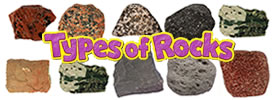Difference between Oil and Butter
Key difference: Oil and butter are two widely used cooking products. The main differences between oil and butter are based on their method of preparation, taste and the nutrients in the products.
Nowadays, with the increasing number of health fanatics all around the world, people have started watching and counting the calories of the food they eat. Every food item undergoes a grilling process of constant twisting and turning, by people, to check the amount of fats, oils, proteins, salts and carbohydrates in the item. Oil and butter are two such ingredients that people always keep a check on, but at the same time, these are also the ingredients that people are widely fond off and can’t do without using them in their cooking.

In many countries, both, oil and butter are widely used for daily cooking. Both are used as spreads, condiments or added to food to enhance the flavor. Although, oil and butter have similar usage, both are widely different from each other in terms of their ingredients, taste and health content.
The term ‘oil’ is defined as any neutral, non-polar chemical substance, which is a viscous liquid at ambient temperatures. It is made from plant, animal or synthetic fat. Oil is widely used for cooking, baking and frying, etc. At times, it is only used as dressing in salads and dips and is termed as edible oil. This cooking oil is mainly produced in two separate processes. First, it is extracted from a seed, nut or a fruit. Then, it undergoes refinement to alter the appearance, texture, smell and taste.
Butter, on the other hand, is a dairy product which is made from churning fresh or fermented cream or milk. It can be salted and unsalted. Butter is made from separating cream from milk. A forceful spin, known as centrifuge is used to quicken the process. Centrifuge allows the cream to separate from the milk. The cream is then churned until it turns into butter.
Both, butter and oil can be used interchangeable in many dishes. However, depending on their flavor and nutrients, both are individually used in variety of dishes. In most cases, cooking oil is flavored depending on the fruit which it is extracted from, but generally, it is tasteless. Butter, on the hand, has a salty flavor. Which is why, butter is widely used in making desserts, and oil is mainly used in cooking and making mains, entrées, etc. However, they can be substitued for each other in both savory and sweet dishes. Though, many people consider oil a healthier option than butter. As, oil have unsaturated fatty acids, whereas butter is full of saturated fatty acids.

Generally, oil is in the liquid form, but there are some oils that solidify in room temperature. On the other hand, butter is widely available in a solid form, and can be melted according to its use. Butter mainly consists of butterfat, milk proteins and water, while oil is made of mono-saturated fats, poly-saturated fats, and trans fat.
There are many types of cooking oil available such as olive oil, palm oil, soybean oil, canola oil, pumpkin seed oil, corn oil, sunflower oil, safflower oil, peanut oil, grape seed oil, etc. There are many types of butter also available such as salted, unsalted, margarine, etc. according to the requirement. Further differences can be read on the table below.
Comparison between Oil and Butter:
|
|
Oil |
Butter |
|
Definition |
It is defined as any neutral, non-polar chemical substance, which is a viscous liquid at ambient temperatures. |
It is defined as a dairy product which is made from churning fresh or fermented cream or milk. |
|
Made from |
It is made from animal, plant or synthetic fat. |
It is made from milk of animals. |
|
Method |
It is made from two methods:
|
It is made from two methods:
|
|
Content |
It contains of:
|
It contains of:
|
|
Taste |
It depends on the type of vegetable or fruit used, but it is tasteless. |
It is salty in taste. |
|
Fats |
It has unsaturated fatty acids. |
It has saturated fatty acids. |
|
Better |
It is much better in terms of health. |
It is much better in terms of taste. |
|
Smoking point |
It has high smoking point. |
It has low smoking point. |
|
Types |
There are many types of cooking oil available such as olive oil, palm oil, soybean oil, canola oil, pumpkin seed oil, etc. |
There are many types of butter also available such as salted, unsalted, margarine, etc. |
|
Use |
It is widely used in savory dishes. |
It is widely used in desserts. |
|
Form |
It is mostly in liquid form. |
It is in solid form. |
Image Courtesy: med-health.net, draxe.com









Add new comment